Throughout the 1950s, Patek Philippe was producing some of its most daring designs. It was a period in which the manufacture showcased its artistic and forward-thinking approach to horology. Henri Stern was at the helm and he was willing to explore innovative methods of timekeeping such as photoelectric, the Electronic Master Timing Systems and Cottier’s World Time system. An artist at heart, Henri Stern was also willing to experiment with avant-garde design and thanks to the genius creations of Gilbert Albert, some of the most extraordinary form watches appeared on the market during this time.
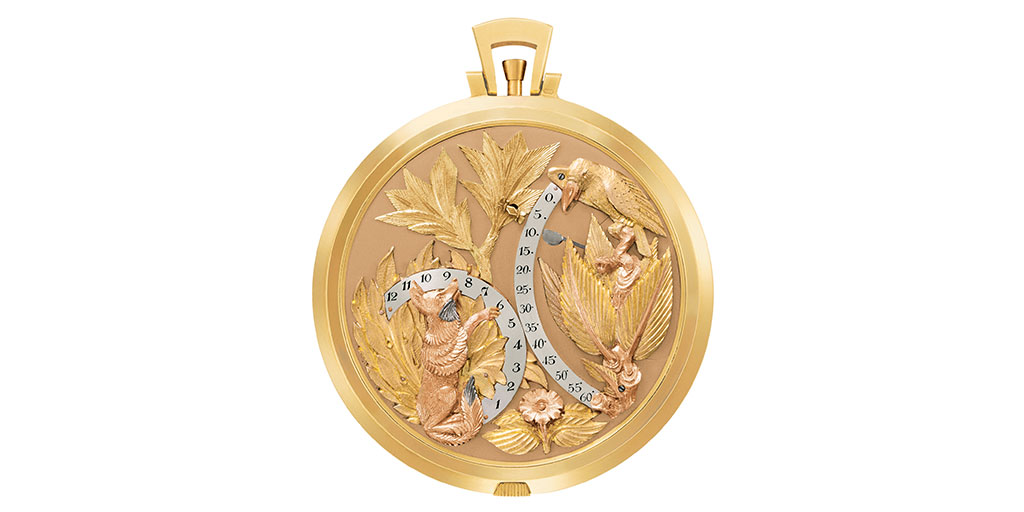
Yet with all this innovation, Patek Philippe never forgot its roots and preserving the traditional art of watchmaking remained paramount. One timepiece from 1958 requires particular attention for combining all the brilliance of Patek Philippe’s heritage: The Crow & The Fox pocket watch which was entirely conceived and crafted by Louis Cottier, and united the retrograde timing system with an automaton bras-en-l’air display. The pocket watch remained a prototype and was seldom seen over the years except at special exhibitions. It now sits proudly in the Patek Philippe Museum where it has the honor of being a personal favorite of Philippe Stern.
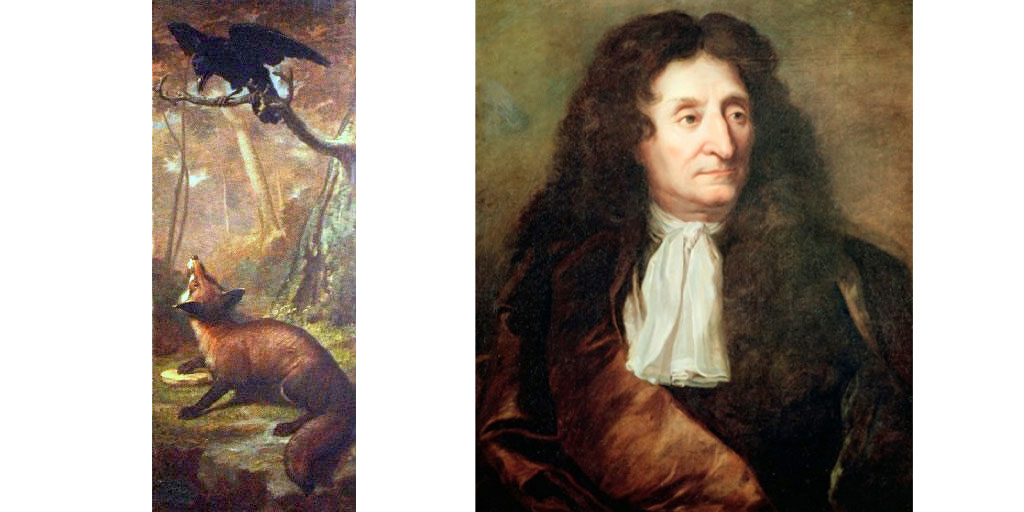
The subject of this miniature marvel was inspired by a fable written by Jean de La Fontaine (above) in the seventeenth century and harmoniously pays respect to the arts of automata and literature. Long before literacy, it was the tradition of storytelling which helped society understand human morals. The following fable offers a strong lesson:
The Crow and the Fox
After Jean de La Fontaine (1691 -1695)
Master Crow perched on a tree,
Was holding a cheese in his beak.
Master Fox attracted by the smell
Said something like this:
“Well, hello Mister Crow!
How beautiful you are! How nice you seem to me!
Really, if your voice
Is like your plumage,
You are the phoenix of all the inhabitants of these woods.”
At these words. The Crow is overjoyed.
And to show off his beautiful voice,
He opens his beak wide, lets his prey fall
The Fox grabs it, and says: “My good man,
Learn that every flatterer
Lives at the expense of the one who listens to him.
This lesson without a doubt, is well worth a cheese.”
The Crow, ashamed and embarrassed,
Swore, but a little late, that he would not be taken again.
The moral of the “The Crow and The Fox” is simple: beware of flattery and mindful of ulterior motives. The fox found an easy way to make the crow part with his tasty piece of cheese simply by flattering him and asking him to show off his fine voice and therefore drop the cheese. Yet there is nothing simple about “The Fox and Crow” pocket watch ref. 784 as we shall now see by looking more closely at this extraordinary timepiece.
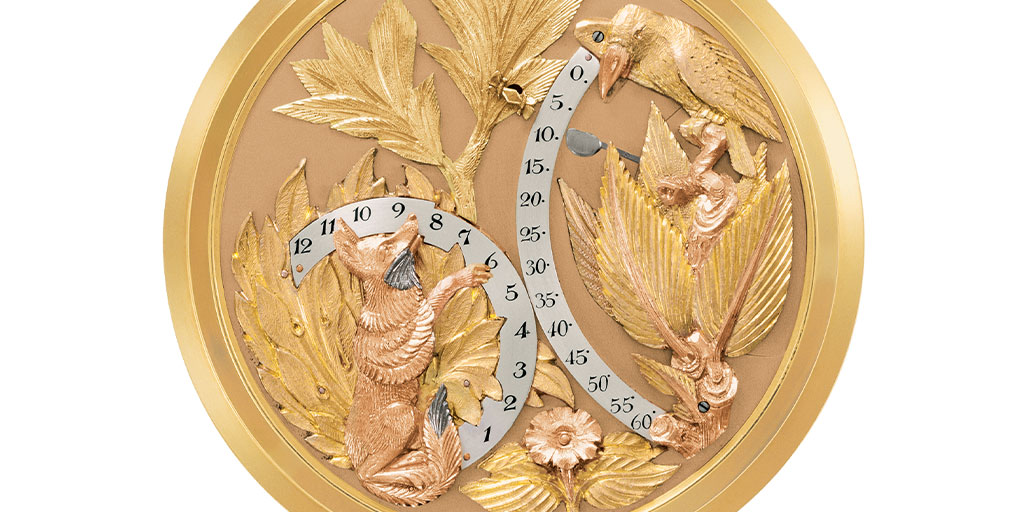
The fable’s story is ingeniously told by the bas-en-l’air design on the dial which is highly detailed and certainly is a testament to the company’s rare handcrafts. Richly engraved in 18K yellow, rose and white gold are a fox and a crow surrounded by leafy foliage. When activated by pressing a button on the pendant, the fox raises its right paw to indicate the hour which is shown on the left-hand sector. Simultaneously, the crow opens its beak, dropping the precious cheese, appropriately made in platinum, which in falling indicates the minutes on the right-hand sector. All this action happens on a 62 mm case with a thickness of 11.8 mm.
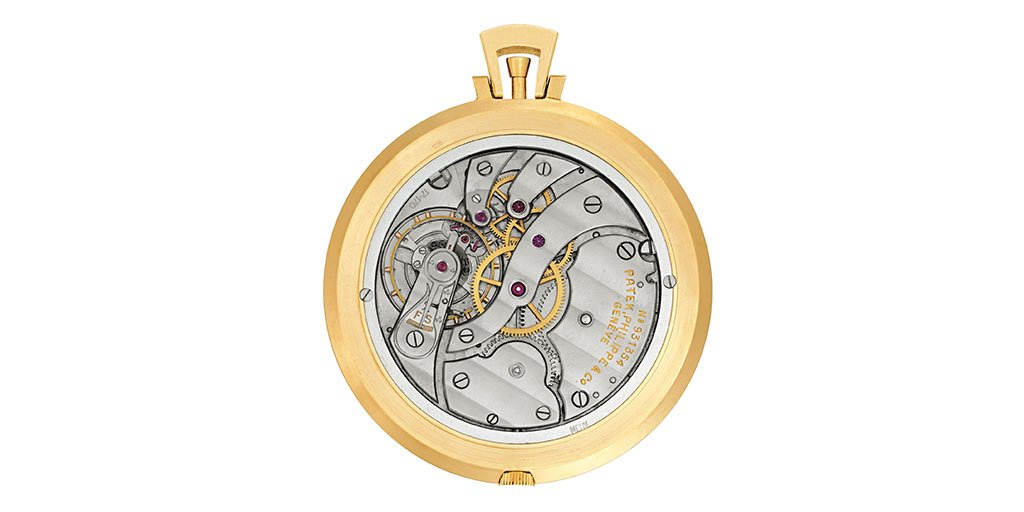
The Fox and Crow pocket watch is housed with the caliber 17-170 movement number 931 354. The movement was customized by Louis Cottier to incorporate the retrograde system which enables the fox and crow to indicate the hours and minutes along the two numbered sectors. Born in Carouge, France on September 28, 1894, Louis Cottier was among the most iconic and impactful watchmakers of the 20th century. In addition to inventing the Heure Universelle (World Time) mechanism, Cottier was particularly fascinated by retro-grade and jump hour systems and any unusual format that could express time. The Fox and Crow pocket watch enabled him to exercise his creative genius both visually and technically.

The animated crow and fox are inspired by the bras-en-l’air (arms in the air) watches first produced around 1800. Traditionally, this design would depict a human figure, raising and lowering its arms to indicate the hours and minutes on a retrograde scale. This underdiscussed style of watchmaking that dates back over two centuries can be admired within some of the world’s most significant museums. Above is an early example of a bras-en-l’air pocket watch which was made in Switzerland around 1798 – 1800 and is housed in the British Museum.
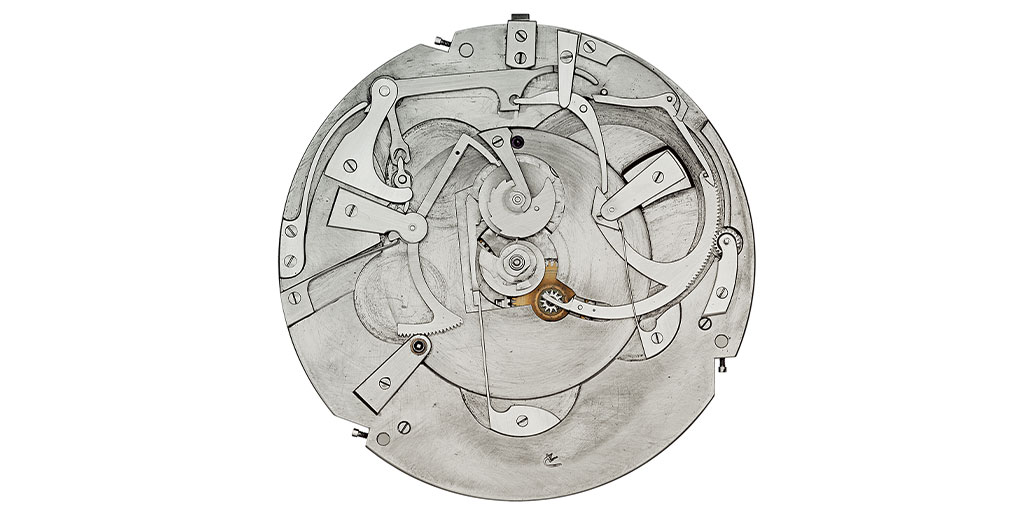
The Fondation de la Haute Horlogerie defines retrograde display as “an additional mechanism that enables the hand – or any other type of indicating organ – to return to its point of departure after having traveled over a graduated segment. The latter may be either linear or shaped like the arc of a circle (sector). This complication may apply to any timekeeping indication, provided it is cyclical.” The retrograde is most seen within Patek Philippe watches as a date calendar function, although it can also indicate seasonal changes in more complex pocket watch models. The retrograde calendar saw a resurgence within Patek Philippe wristwatches in the 1990s and 2000s. Whether in the traditional Calatrava, or in tonneau-shaped models like the ref. 5013, the retrograde calendar had become an important element within many of the manufacturers’ complicated wristwatches.

Louis Cottier was constantly intrigued by potential formats in which time could be expressed and the next watch he created immediately after The Fox and Crow could not have been more different. The ref. 3414, better known by its nickname, ‘The Cobra’ with its integrated gold bracelet and a linear digital time display was a taste of the future.
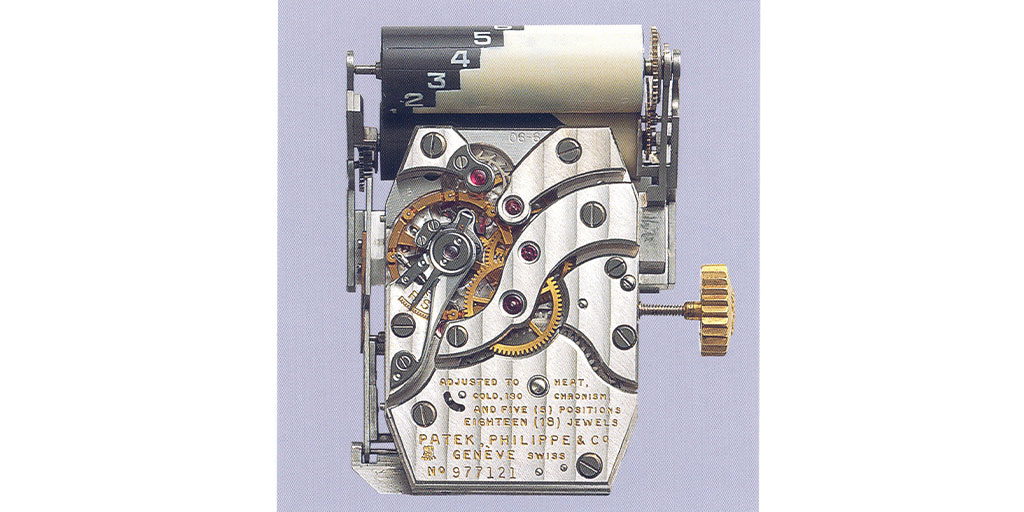
The dial of the ‘Cobra’ is made up of two synthetic cylinders, one for the hours (making one complete rotation every twelve hours), the other for the minutes (making one rotation every 60 minutes). The superimposed cylinders, half white and half black, are linked to the motion workings and indicate the hours and minutes in two narrow apertures, as they turn. To make this watch, Cottier developed an ingenious prototype using a caliber 9”’ – 90. It was not serially produced even though linear displays were popular during the late 1950s when they were generally used for speed indication in car tachometers. The ‘Cobra’ remains one of Patek Philippe’s most unique wristwatches and a fan favorite among collectors as they rarely come on the market.

Over the years, the Fox and the Crow remained largely out of sight, although it did appear occasionally at exhibitions during the 1960s, particularly in the USA when Patek would bring a display of its most creative timepieces to be viewed at authorized retailers. It also appeared in the 1962 Patek Philippe ad below in the 19th issue of Eastern Jeweler & Watchmaker. The mysterious pocket watch can be seen amongst four wristwatches: the ref. 3467 on a gold bracelet, a ref. 2496, as well as a ladies’ “Joallerie” concealed timepiece designed by Gilbert Albert. The prototype ref. 784 amongst these watches was certainly the focal point of the page, although unlike the other watches, it was not for sale. The pocket watch also appeared in the seminal 1982 book ‘Patek Philippe Pocket Watches’ by Alan Banbery and Martin Huber.
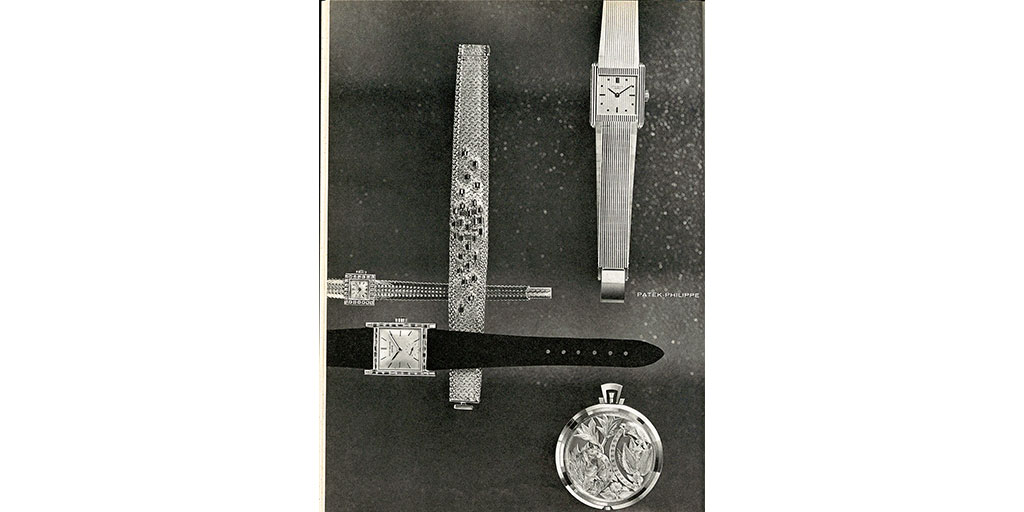
While finding such photos of The Crow and The Fox displayed in past material brings more appreciation for the watch’s history, the experience of witnessing the timepiece in person at the Patek Philippe Museum, is incomparable. The handcrafted-sculptural components of both figures are truly something that warrants admiration with one’s own eyes.
In a book written by Philippe Stern in 2004, “Patek Philippe the values of a family company”, the then president presents a statement of values and the principles his company lives by. The book also includes eleven watches that personally inspired Philippe Stern dating from the 17th century to the present day. Among these very special timepieces is The Crow and the Fox pocket watch. The fable represented in the timepiece resonated with Mr. Stern, “This fable is a knowing aside, which I interpret as demonstrating that our aim is not to flatter our clients. We passionately believe in offering them a set of permanent, timeless and intrinsic values that they can identify with from a qualitative, technical and aesthetic point of view, without having to resort to superficial praise.” Throughout history, only elite watchmakers could make timepieces such as The Crow and Fox. Rarer still is the number of watchmakers capable of such mechanical masterpieces today. Thankfully, we can be sure that Patek Philippe will maintain this precious craft.


